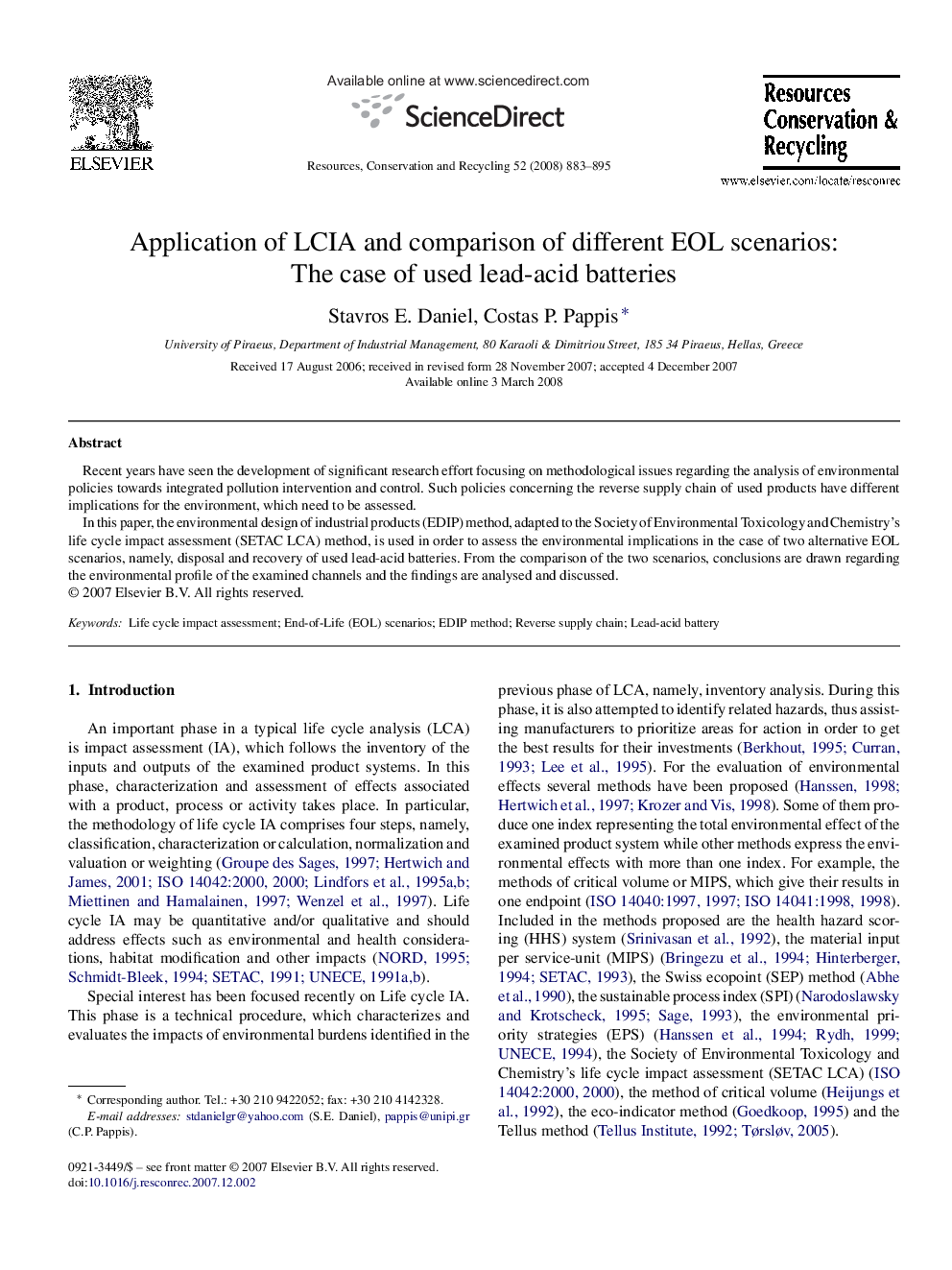| Article ID | Journal | Published Year | Pages | File Type |
|---|---|---|---|---|
| 1063712 | Resources, Conservation and Recycling | 2008 | 13 Pages |
Recent years have seen the development of significant research effort focusing on methodological issues regarding the analysis of environmental policies towards integrated pollution intervention and control. Such policies concerning the reverse supply chain of used products have different implications for the environment, which need to be assessed.In this paper, the environmental design of industrial products (EDIP) method, adapted to the Society of Environmental Toxicology and Chemistry's life cycle impact assessment (SETAC LCA) method, is used in order to assess the environmental implications in the case of two alternative EOL scenarios, namely, disposal and recovery of used lead-acid batteries. From the comparison of the two scenarios, conclusions are drawn regarding the environmental profile of the examined channels and the findings are analysed and discussed.
